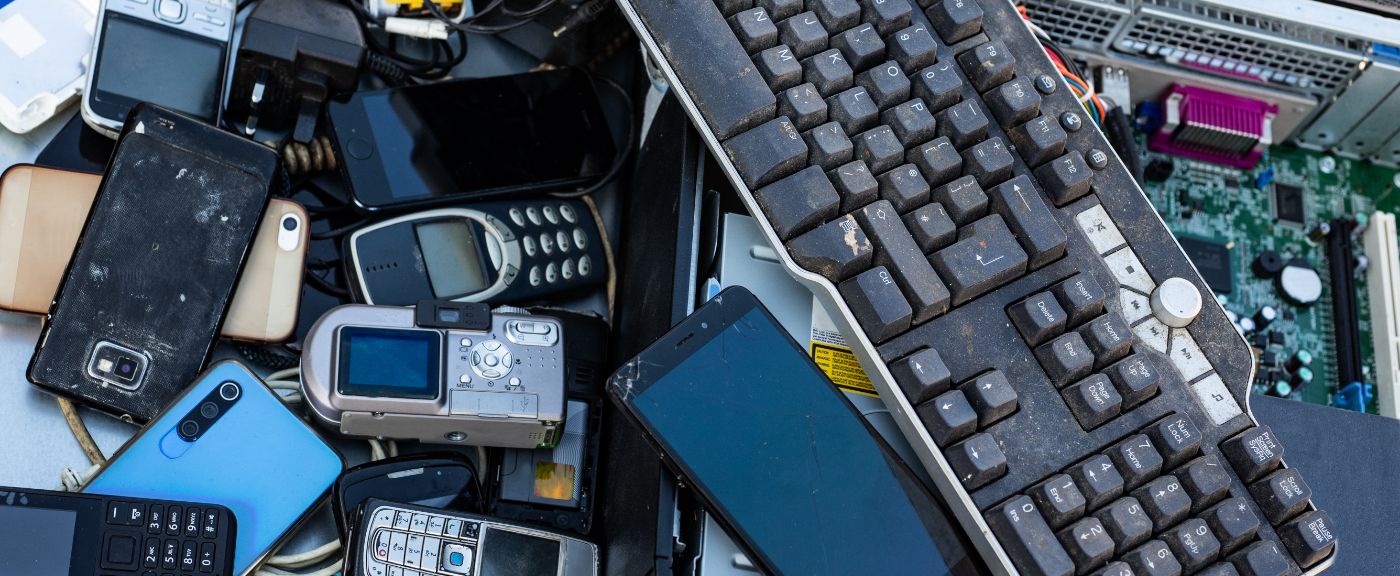R2 Certification: The Mark of Quality in Electronics Recycling
R2 Certification: The Mark of Quality in Electronics Recycling
Blog Article
Elevate Your E-Waste Administration With R2 Accreditation: a Detailed Review
One trick approach to elevate e-waste monitoring techniques is by achieving R2 qualification. By checking out the procedures and benefits connected with R2 qualification, a much deeper understanding of how it can reinvent e-waste monitoring approaches emerges, losing light on a path in the direction of sustainability and honest disposal techniques.
Relevance of E-Waste Administration

When e-waste is not handled appropriately, these poisonous compounds can leak into the environment, creating harm to wildlife and potentially entering the food chain, posing dangers to human wellness. In addition, the improper disposal of e-waste adds to pollution and greenhouse gas discharges, intensifying climate modification and environmental deterioration.

Benefits of R2 Qualification

First of all, R2 accreditation boosts reliability by showcasing an organization's commitment to lasting methods. It ensures consumers, companions, and stakeholders that the business sticks to rigid criteria for e-waste administration - r2 certification. This reputation can lead to enhanced count on and boosted relationships with clients who focus on ecological obligation
Secondly, R2 accreditation assists reduce dangers associated with incorrect e-waste disposal. By adhering to the strict standards established forth by the accreditation, organizations can lessen the chance of data breaches, environmental contamination, and legal effects. This aggressive strategy safeguards the business's online reputation and lessens possible liabilities.
Last but not least, R2 accreditation shows a commitment to ecological stewardship - r2 certification. By responsibly handling electronic waste through accredited processes, organizations contribute to the conservation of resources, reduction of air pollution, and promo of a circular economy. This dedication not just benefits the setting however likewise aligns with evolving consumer assumptions for lasting service methods
R2 Accreditation Process Overview
Having established the benefits of R2 qualification in promoting integrity, threat mitigation, and ecological stewardship, it is vital to now outline the thorough procedure entailed in acquiring this accreditation. The R2 accreditation procedure begins with a complete testimonial of the company's operational policies and procedures to see this site guarantee conformity with the R2 standard. This preliminary analysis is essential in recognizing any type of voids that need to be resolved before proceeding even more.
As soon as the company's practices line up with the R2 conventional demands, an independent third-party auditor carries out an on-site audit to assess the application and performance of these practices. This audit includes a thorough evaluation of documentation, interviews with personnel, and physical examinations of centers to validate compliance.
Complying with a successful audit, the organization obtains a certification choice based on the auditor's findings. If accepted, the company is provided R2 qualification, showing its dedication to accountable e-waste management. It is necessary to note that keeping R2 accreditation calls for continuous compliance with the standard's demands and regular audits to make sure ongoing adherence to best methods in e-waste recycling and disposal.
Secret Criteria for R2 Conformity
A necessary element of attaining R2 compliance is ensuring that all electronic waste (e-waste) processing facilities meet rigid environmental and safety criteria. To abide with R2 requirements, companies must stick to key criteria that focus on responsible e-waste management methods. These criteria consist of carrying out a documented environmental, health, and security management system, making certain the secure handling of data-containing tools, and performing complete downstream due diligence to track the index final destination of e-waste materials.
Moreover, R2 conformity necessitates the proper testing, refurbishment, and recycling of digital tools to expand its helpful life and lessen environmental impact. Facilities looking for R2 accreditation must also focus on worker health and wellness by giving essential training, personal protective equipment, and a risk-free workplace. Furthermore, keeping detailed records of e-waste processing activities and regularly undergoing audits by approved licensing bodies are important elements of showing ongoing conformity with R2 criteria.
Effects of Sustainable E-Waste Practices
The implementation of sustainable e-waste methods in conformity with R2 compliance not just guarantees ecological and security criteria are satisfied but likewise dramatically impacts the total lifecycle of electronic products. By adhering to R2 requirements, digital waste monitoring procedures come to be extra reliable, minimizing the ecological footprint of electronic products. Lasting e-waste techniques promote the proper disposal of electronic elements, making sure that harmful products are managed responsibly and do not wind click this link up contaminating the atmosphere.
Furthermore, lasting e-waste methods can contribute to task production in the recycling and repair markets, cultivating economic growth while promoting ecological responsibility. Generally, the fostering of lasting e-waste techniques under R2 certification offers as a critical action towards accomplishing a much more ecologically lasting electronic devices sector.
Conclusion
In verdict, carrying out proper e-waste monitoring techniques is important for environmental sustainability and resource preservation. R2 certification plays a vital role in ensuring accountable handling and disposal of digital waste. By sticking to the strict requirements stated by R2 standards, organizations can not only reduce their ecological effect but likewise add to an extra lasting future for generations to come.
One key method to raise e-waste administration techniques is by achieving R2 qualification. By checking out the benefits and processes connected with R2 certification, a deeper understanding of exactly how it can transform e-waste management strategies arises, losing light on a course towards sustainability and ethical disposal methods.
The R2 accreditation process starts with a detailed testimonial of the company's operational plans and treatments to make certain conformity with the R2 standard. If approved, the organization is provided R2 certification, showing its commitment to liable e-waste management. In general, the fostering of lasting e-waste practices under R2 accreditation serves as an important step towards attaining a much more environmentally lasting electronic devices industry.
Report this page